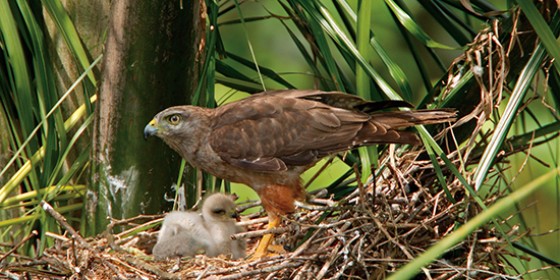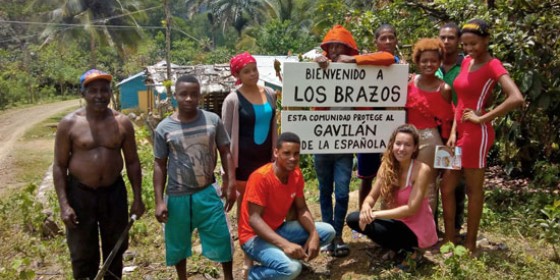When The Peregrine Fund began investigating the Ridgway’s Hawk, only about 300 remained. This charismatic species’ habitat was lost to human development, restricting the remnant population to the small Los Haitises National Park on the northeastern coast of the Dominican Republic.
Habitat loss was just one of the many threats impacting Ridgway’s Hawks. They were also being shot by people protecting their chickens. To make matters worse, botfly infestations frequently killed nestlings, resulting in reproductive rates that could barely sustain this fragile population.
Threats to Ridgway's Hawks

Eladio Fernandez

The “perfect storm” of threats against Ridgway's Hawks called for an equally perfect storm of innovation. We began by testing a technique called assisted dispersal to effectively “transplant” young hawks to new, safer territory and expand the species’ range. At the same time, we informed residents in both areas that the hawks typically eat reptiles and small rodents — not chickens — and offered free cages to protect young poultry from all predators. Our school visits, printed field guides, and media interviews are changing attitudes towards Ridgway’s Hawks and other raptors. We also hire and train residents as field technicians, and purchase locally-made handicrafts to offer in our gift shop, effectively stimulating the local economy while showing how conservation benefits birds and people.
Once we knew assisted dispersal could work, we discovered a new problem: electrocution by power lines. We quickly partnered with the local utility company to retrofit power poles surrounding the new territory at Puntacana Resort and Club, where our “transplanted” population now thrives. The Grupo Puntacana Foundation promotes ecotourism and conservation programs, directly benefiting hawks.
Botfly infestation is a more complex problem, but at nests where we applied a pesticide, nestling survival rates increased more than four-fold. This intervention is crucial for restoring the Ridgway’s Hawk population while our researchers look for the causes of this ecological imbalance. Botflies are an emerging threat to species throughout the Caribbean, and our discoveries now will contribute to future conservation needs.







